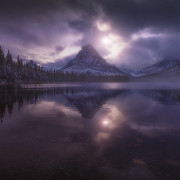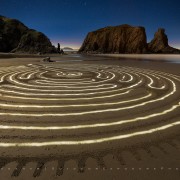3 Compelling Reasons to Use Smart Objects in Photoshop
Since photography editing programs have become so robust over the years, post-processing techniques and workflow solutions often can be overwhelming. In terms of creativity, the options seem limitless. However, understanding exactly what is happening to your image data can limit your editing and create unnecessary rework. If you perform edits on a regular, rasterized layer, then you are directly altering the image data. Photoshop is removing data based on your edit, also known as destructive editing. For example, when you clone a part of your image, you are rewriting that data at the pixel level. Smart Objects in Photoshop preserve an image’s source content with all its original RAW data, enabling non-destructive editing to the image. Smart Objects are a smarter (get it) way to edit! When editing in Photoshop, these are my three favorite reasons to use Smart Objects.
Apply Non-Destructive Transformations
Originally, Photoshop created Smart Objects to enable non-destructive transformations. Let’s suppose you are using a regular, rasterized layer, and you apply a transformation to scale, distort, or warp the image. Once you make that change, Photoshop dumps the data it no longer needs. It’s gone forever my friend, dropping your image quality. If you decide that you want to scale the image back up later, then it will show a loss of edge clarity and appear pixelated. The data doesn’t exist to scale the image back up. In addition, you risk having to redo many of the edits performed after the transformation was applied. However, there is a solution!
Smart Objects in Photoshop embed the data into the file at the original size. If you apply a transformation to an image to scale the size down, it may appear like Photoshop throws away that information. Rest assure, Photoshop does not. The Smart Object layer is scaled down; however, it is still referencing the original embedded file. If you scale it back up, Photoshop re-renders the image by using the original file. It will still look pristine, rather than pixelated. This non-destructive editing through Smart Objects provides improved flexibility to restore the original image size if needed. This ability to lock in pixel size and dimension lets you scale, warp, distort, or change the perspective without diminishing image quality and without wedding you to that change permanently.
To make a Smart Object, select the layer or layers you want to convert, right click, and select “convert to a smart object.” Double click on the smart object thumbnail, and it will bring up the layers contained within the smart object. Now, you can make changes as you see fit for your vision.
Entirely Editable Filters
As a rule, any filter applied to a Smart Object is a smart filter. It appears directly below the Smart Object as a smart filter. Smart filters are non-destructive since you can fine-tune, remove, or hide the smart filters at any time. These options exist because smart objects keep all your original data. This flexibility enables you to apply multiple filters and tinker back and forth with settings until you reach your desired vision for the image. In addition, you can rearrange the order of the filters as well as change blend modes and vary the opacity for each individual smart filter.
Last, you can apply masks to smart filters if you only want the filter to only affect a portion of your image. It should be noted that you cannot mask individual smart filters. The mask applies to all the smart filters you have enabled in the Smart Object.
Improvement Over Merging Layers
In general, you cannot perform any pixel-based editing on a smart object, such as cloning or deleting with content aware fill. Let’s suppose that you want to apply sharpening across your image. One option is to merge layers and then sharpen. However, if you merge layers, then you loose access those individual layers after the merge. The edits are finalized.
The alternative is to convert those layers into a Smart Object. To do this, select all the layers you want to merge, right click on the layer, and click convert to Smart Object. Now you can sharpen that smart object layer and still have the flexibility to make changes to any of those layers which you merged into a Smart Object. Simply double click on the Smart Object thumbnail. Photoshop will open it in a new document. From there, you can make changes to color balance, curves, brightness, or contrast. Make your desired changes, save, and close. Your smart object changes are saved and applied back.
BONUS: Embedded, Linked, and New Smart Object via Copy
Once you master the basics of Smart Objects, then you can take the next step of using Embedded Smart Objects, Linked Smart Objects, or Smart Objects via Copy.
- As a very general overview, an embedded smart object is embedded directly into your file. It is essentially a Photoshop Document (PSD) file inside your PSD file. This is your basic option when choosing Layer, Smart Object, then Convert to Smart Object from the menu. If you make a change to one of these Smart Objects, any duplicated Smart Objects update simultaneously in the file.
- A Linked Smart Object is a smart object which is linked to a source image. This allows you to make edits to one smart object. Those edits will apply to any other files where that same linked smart object is linked. Therefore, if you have the linked smart objects across 30 individual files, you only makes the edits once. After saving your change or changes, the updates applies to all 30 files automatically.
- New Smart Object via Copy produces another Smart Object with all data and information. However, that particular Smart Object is not linked. Photoshop isn’t making a duplicate. It makes a new copy of the embedded Smart Object file. With this method, you edit the contents, such as the hue and saturation, and the change will only occur to that particular Smart Object. The change will not occur across all the Smart Objects as with embedded or linked.
Hopefully, this few tips will make you smarter during your next post-processing session. Happy Editing!











